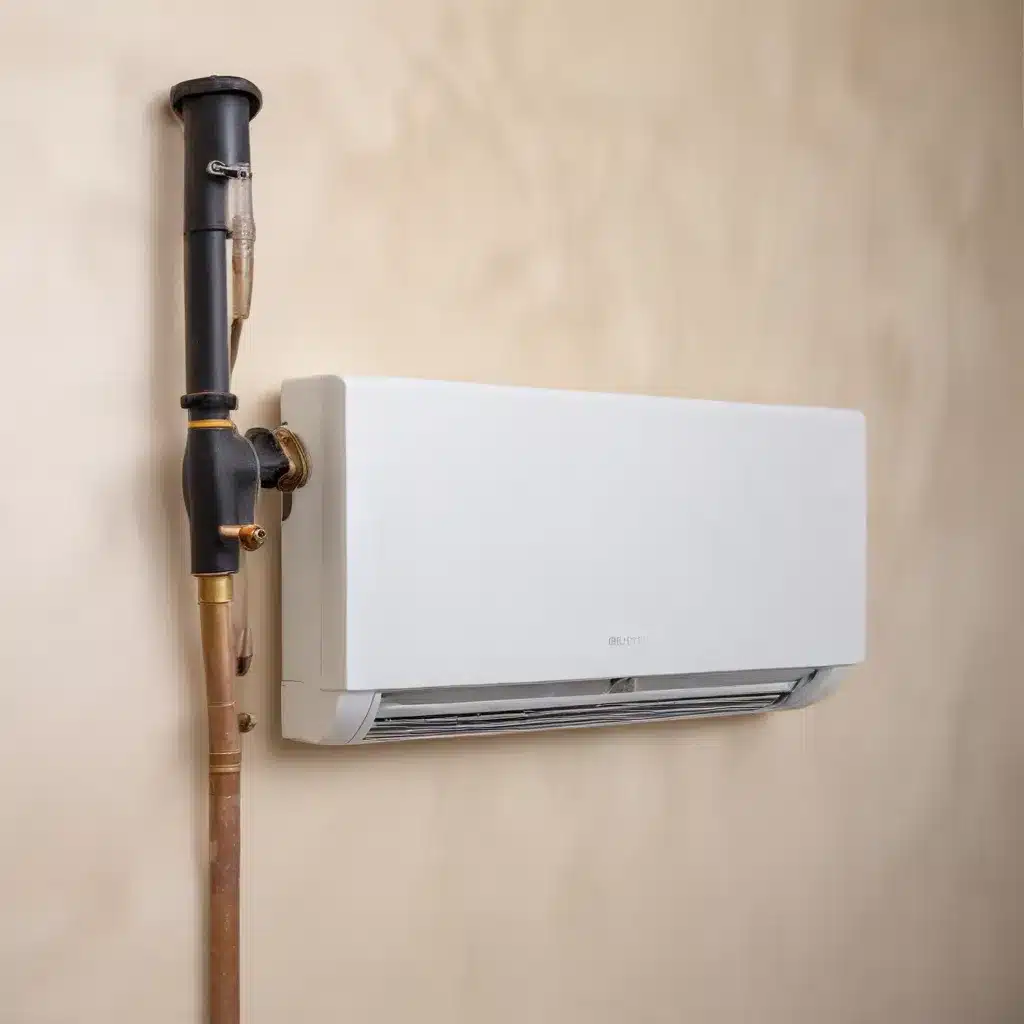
Identifying the Root Causes of Heating System Condensation
Condensation issues in heating systems can be a persistent problem for homeowners, leading to damage, mold growth, and reduced energy efficiency. Understanding the underlying causes is the first step in addressing this challenge effectively.
One of the primary drivers of heating system condensation is improper insulation or ventilation. When the temperature of the heating system components, such as pipes or ductwork, falls below the dew point of the surrounding air, moisture condenses on the surfaces. This can occur due to insufficient insulation, which allows heat to escape, or inadequate ventilation, which fails to properly regulate air circulation and humidity levels.
Additionally, poor sealing or air leaks in the system can contribute to condensation issues. Cracks, gaps, or openings in the ductwork, vents, or other components can allow moist outside air to infiltrate the system, leading to condensation buildup.
The age and condition of the heating equipment itself can also play a role. Older or poorly maintained systems may have degraded components, such as worn gaskets or corroded surfaces, which can create opportunities for condensation to form.
Finally, changes in the home environment, such as increased indoor humidity from activities like showering, cooking, or using humidifiers, can overwhelm the heating system’s ability to manage moisture, resulting in condensation problems.
By understanding these common causes, homeowners and HVAC professionals can develop targeted strategies to address and prevent heating system condensation issues.
Preventing Heating System Condensation
Proactive steps can be taken to mitigate and prevent the formation of condensation in heating systems. Here are some effective methods:
Improve Insulation and Ventilation
Ensure adequate insulation on all heating system components, including ductwork, pipes, and equipment. This helps maintain the desired temperature within the system, reducing the likelihood of reaching the dew point and causing condensation.
Enhance ventilation and air circulation by properly sizing and positioning vents, ensuring optimal airflow throughout the system. This helps regulate humidity levels and prevent moisture buildup.
Seal Air Leaks
Carefully inspect the heating system for any cracks, gaps, or openings that could allow moist air to enter. Seal these areas using appropriate sealants, caulks, or specialized tapes designed for HVAC applications.
Maintain and Upgrade Heating Equipment
Regularly service and maintain the heating system, addressing any worn or damaged components that could contribute to condensation issues. Consider upgrading to more energy-efficient and moisture-resistant equipment, such as high-efficiency boilers or furnaces, as needed.
Control Indoor Humidity
Manage the overall indoor humidity levels in the home by using dehumidifiers, exhaust fans, or other moisture-control measures. This can help prevent excess moisture from entering the heating system and contributing to condensation problems.
Implement Proper Drainage
Ensure that any condensation or drainage from the heating system is properly directed away from the equipment and the home’s foundation. This may involve installing dedicated drainage pipes or channels to safely remove the collected moisture.
By addressing these key areas, homeowners and HVAC professionals can effectively prevent or mitigate heating system condensation, ensuring the efficient and reliable operation of the heating system while protecting the home’s indoor air quality and structural integrity.
Remedying Existing Heating System Condensation Problems
If your home is already experiencing issues with heating system condensation, there are several remedies you can explore to address the problem:
Identify and Resolve the Root Cause
Before attempting any fixes, it is crucial to thoroughly investigate the source of the condensation. Carefully inspect the heating system, considering the factors discussed in the previous sections, to pinpoint the underlying cause. This will ensure that any remedial actions effectively address the problem at its core.
Enhance Insulation and Sealing
If poor insulation or air leaks are contributing to the condensation, take immediate steps to improve the system’s thermal and moisture barriers. This may involve adding or replacing insulation, sealing ductwork and other components, and addressing any gaps or openings.
Upgrade Ventilation and Dehumidification
Enhance the ventilation system to improve air circulation and manage humidity levels. Consider installing or upgrading exhaust fans, heat recovery ventilators, or dehumidifiers to actively remove excess moisture from the home’s air.
Install Dedicated Condensate Management Systems
For persistent condensation issues, consider implementing a dedicated condensate management system. This may include installing condensate pumps, drains, or collection tanks to safely remove the accumulated moisture from the heating system.
Replace Problematic Components
In some cases, severely damaged or deteriorated heating system components may need to be replaced. This could include corroded pipes, leaking valves, or malfunctioning humidifiers that are contributing to the condensation problem.
Consult Professional HVAC Technicians
For complex or persistent heating system condensation issues, it is recommended to seek the assistance of experienced HVAC technicians. They can perform thorough assessments, identify the root causes, and recommend the most appropriate remedies tailored to your specific system and home environment.
By addressing the underlying causes and implementing the appropriate remedies, homeowners can effectively resolve heating system condensation problems, protecting their home’s comfort, energy efficiency, and overall well-being.
Conclusion
Heating system condensation can be a frustrating and potentially damaging issue for homeowners, but with the right approach, it can be effectively addressed and prevented. By understanding the common causes, implementing proactive measures, and addressing existing problems, you can ensure your heating system operates efficiently, reliably, and without the risk of moisture-related damage.
Remember, regular maintenance, targeted upgrades, and the expertise of professional HVAC technicians can go a long way in keeping your home’s heating system performing at its best. By taking these steps, you can safeguard your property, improve indoor air quality, and enjoy the comfort and energy savings of a well-functioning heating system.
If you’re experiencing any heating system condensation issues or have questions about maintaining your home’s comfort, don’t hesitate to contact DD Plumbing and Heating. Our team of experienced professionals is here to provide the support and solutions you need.


